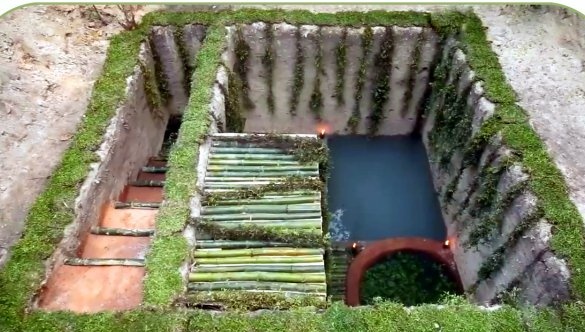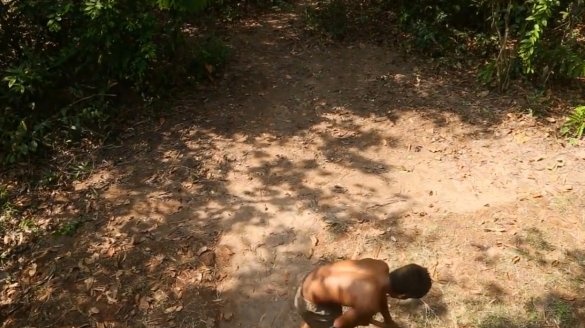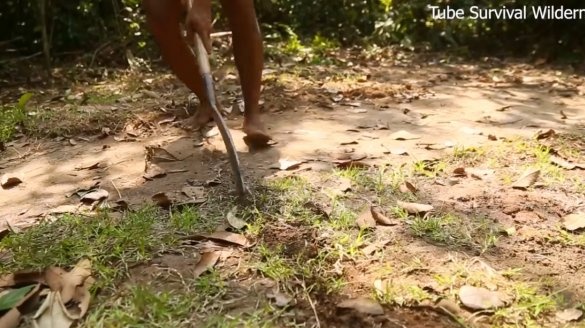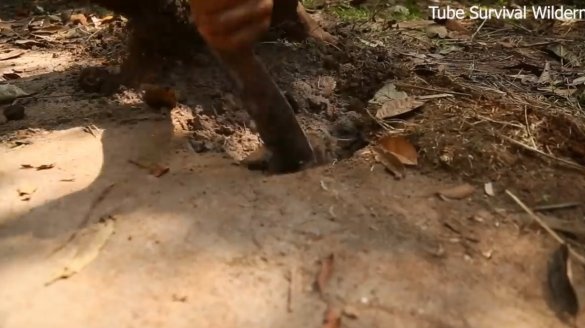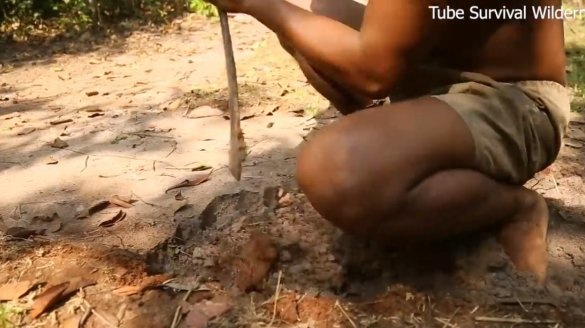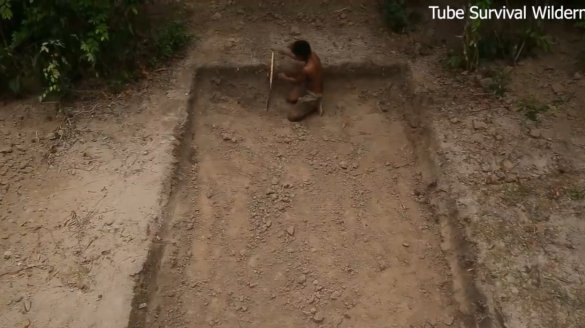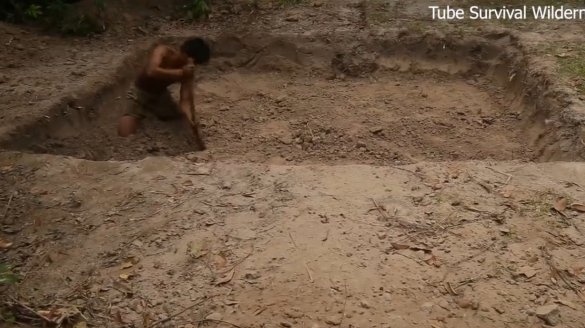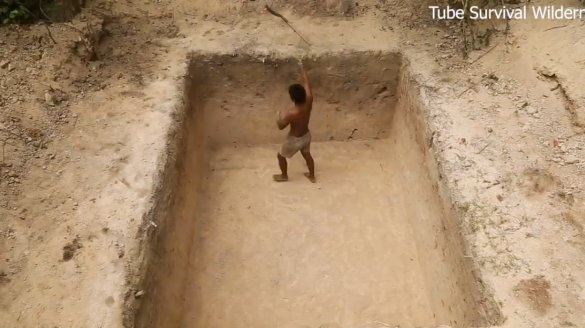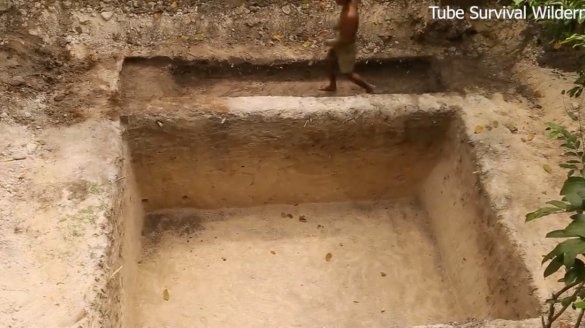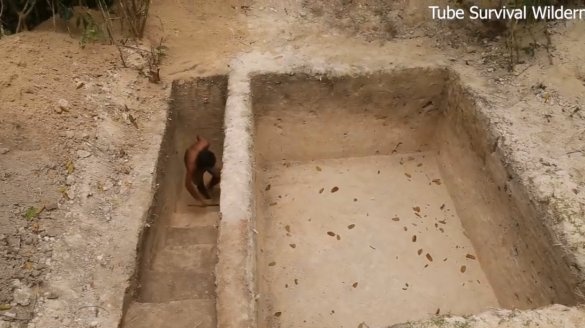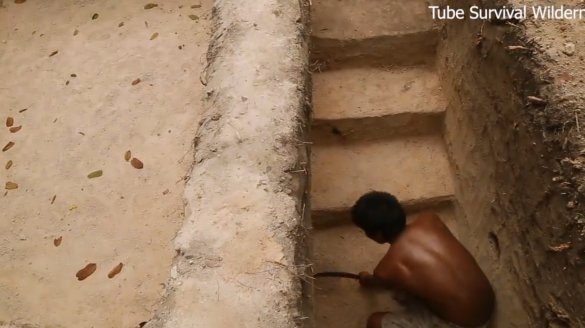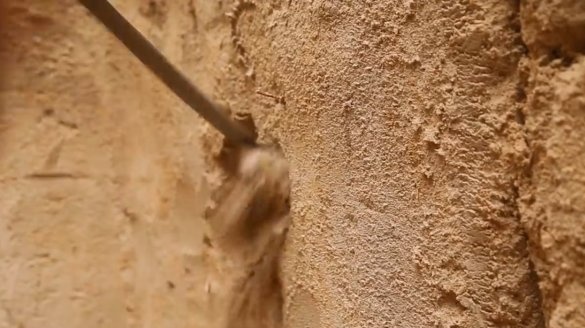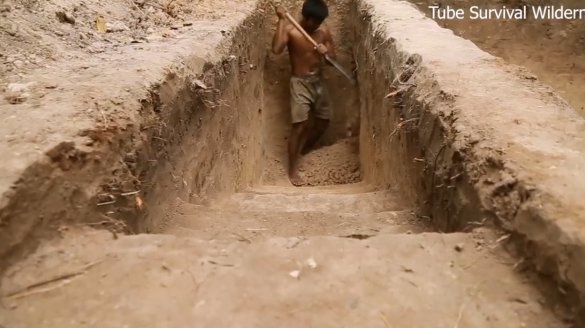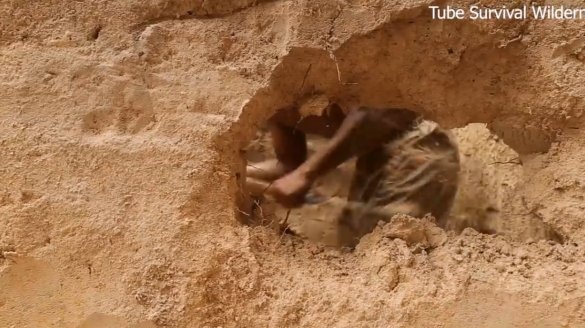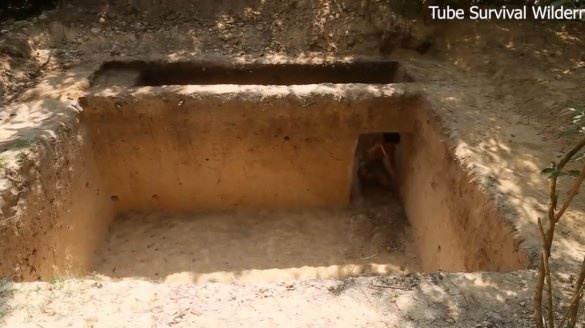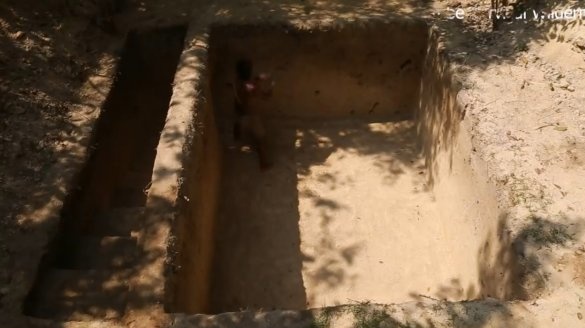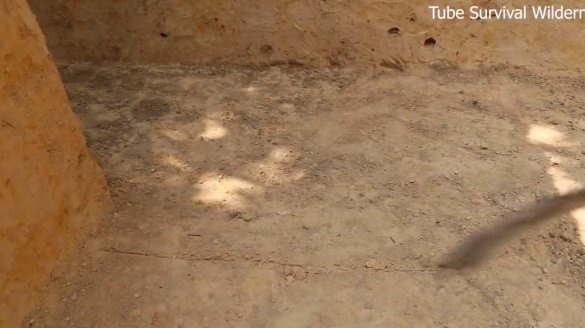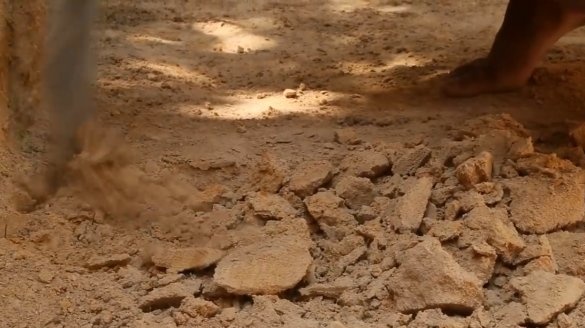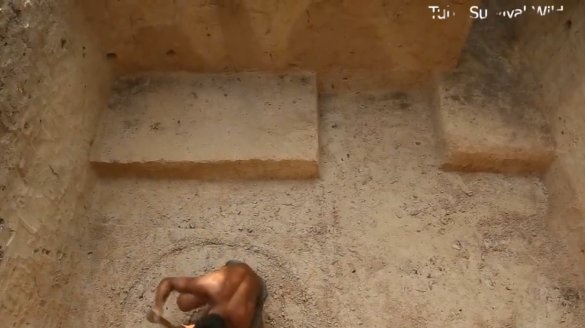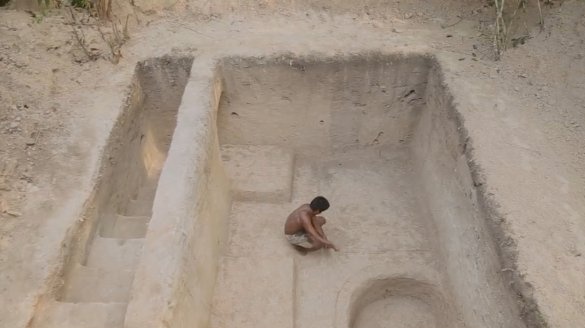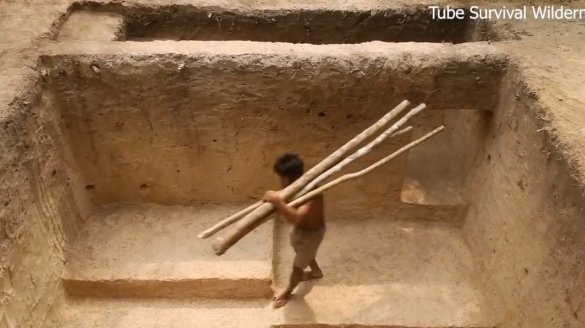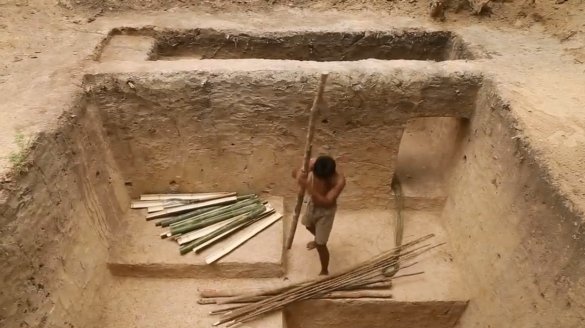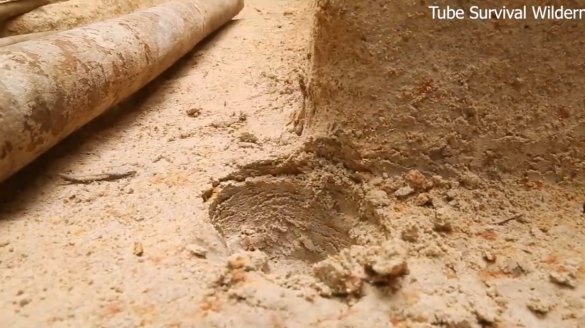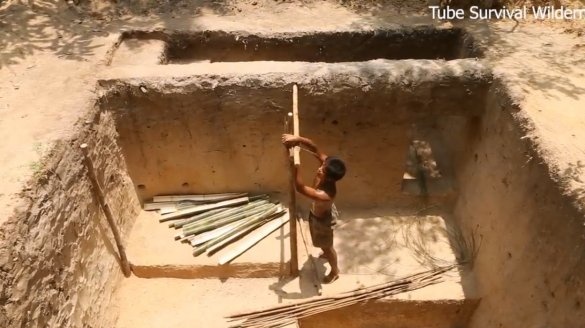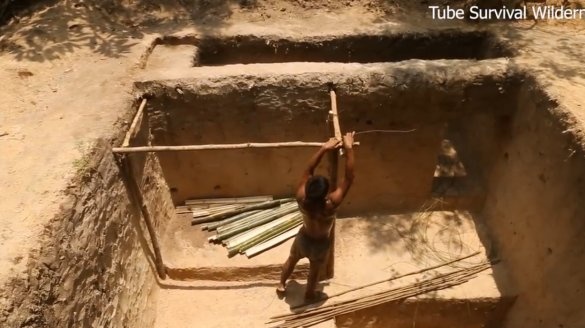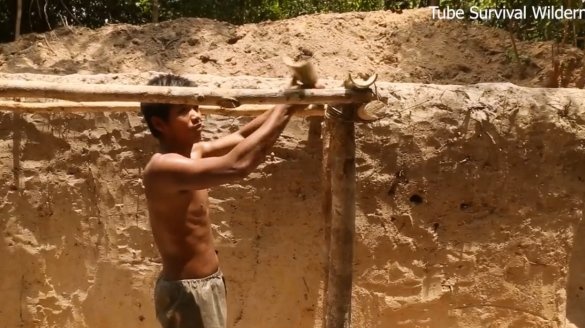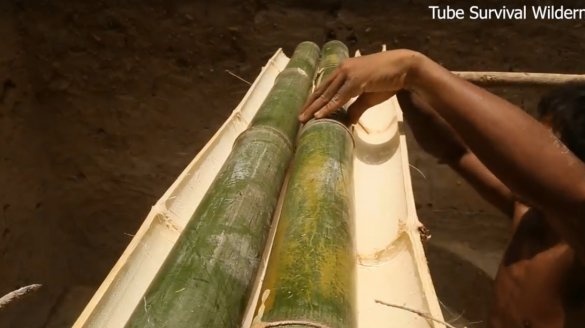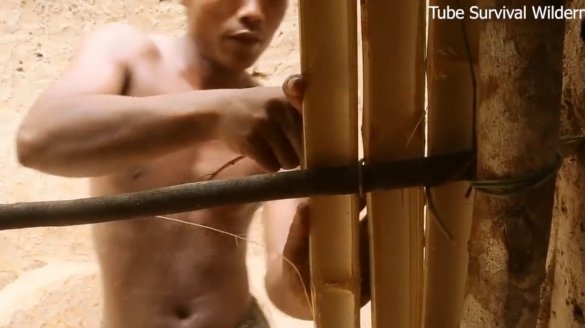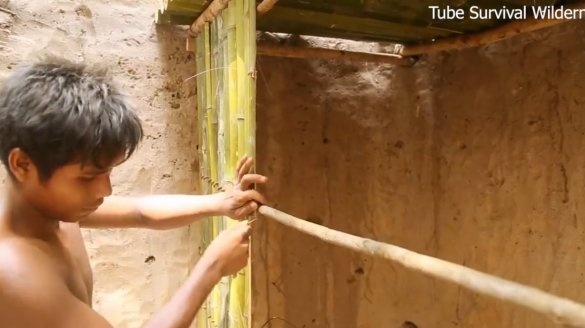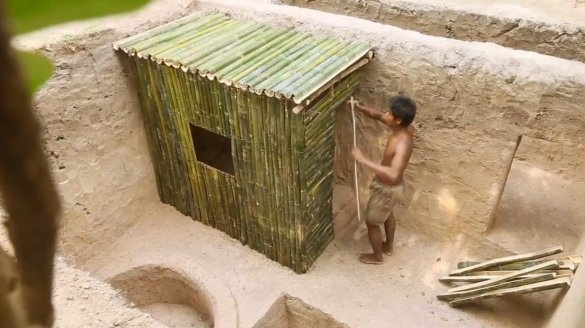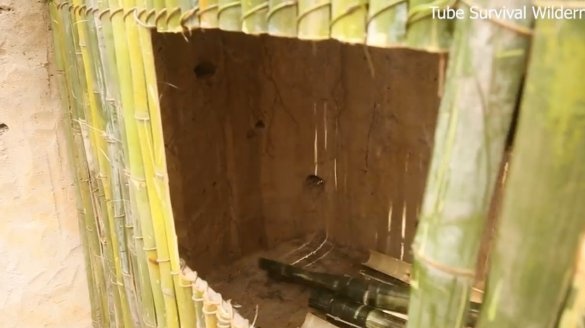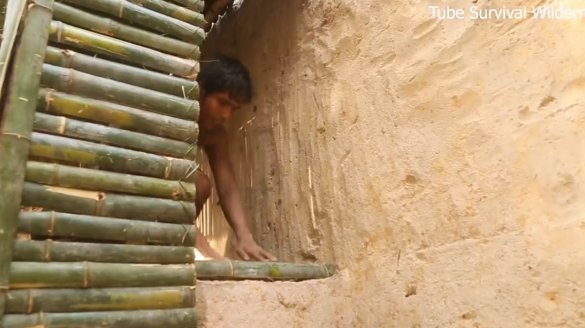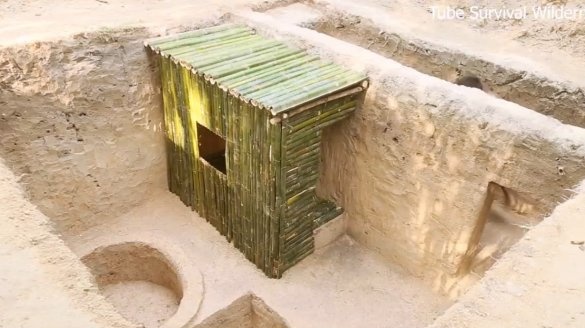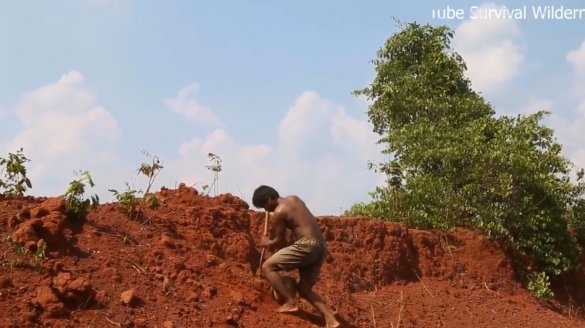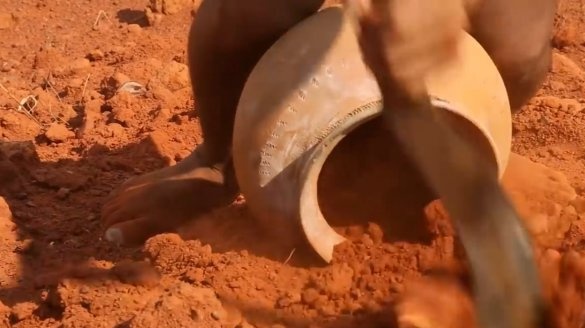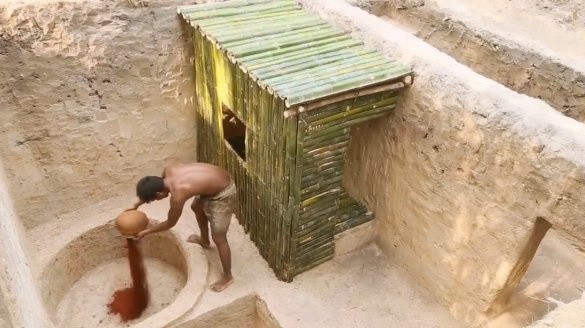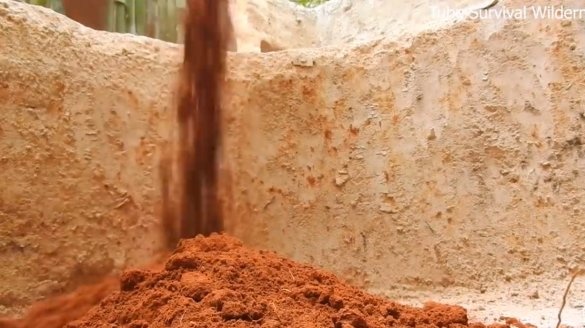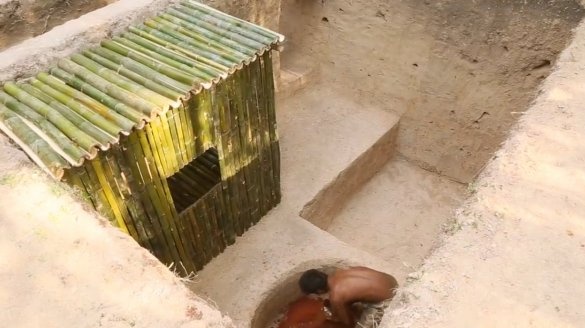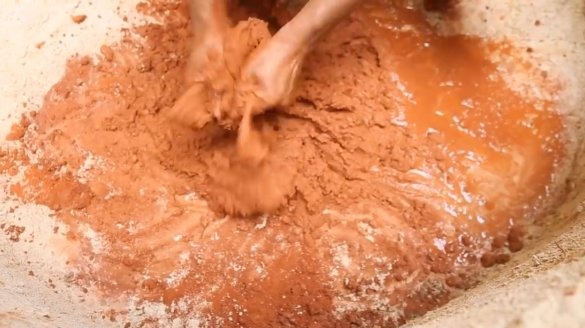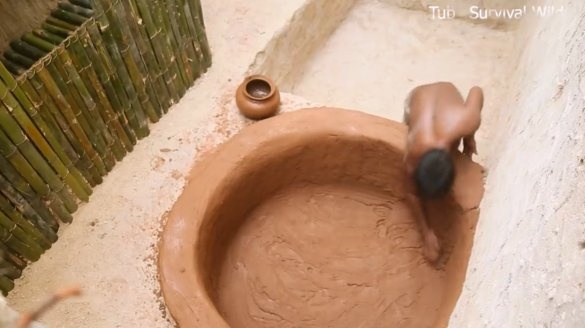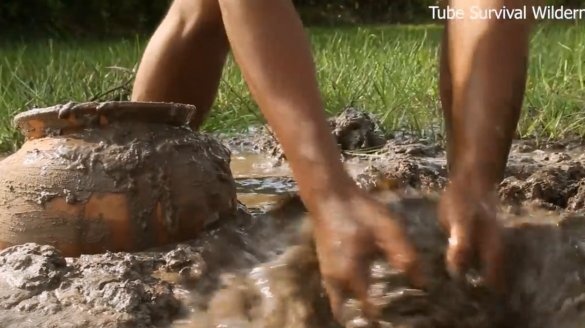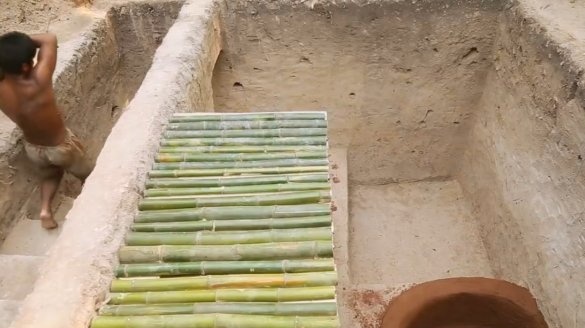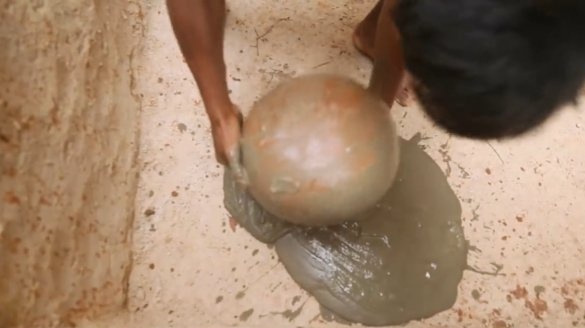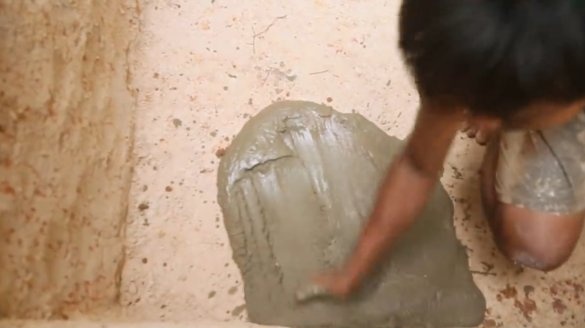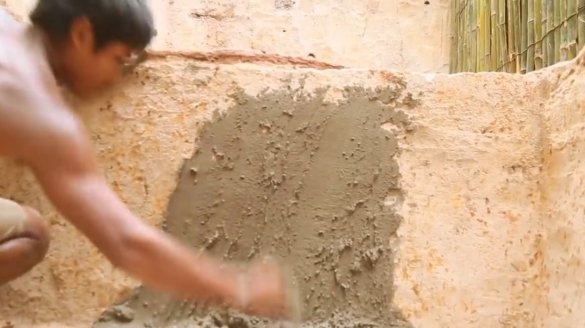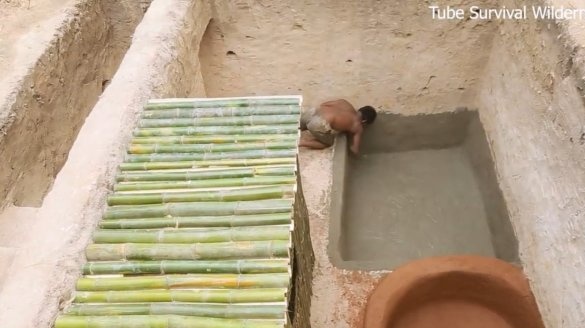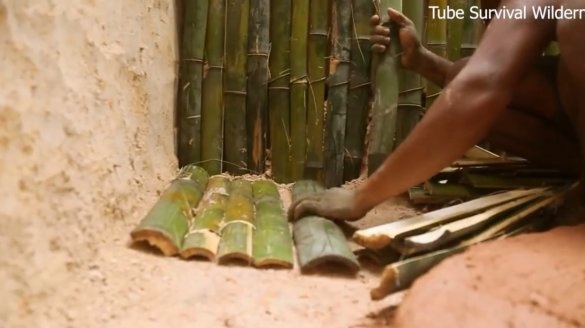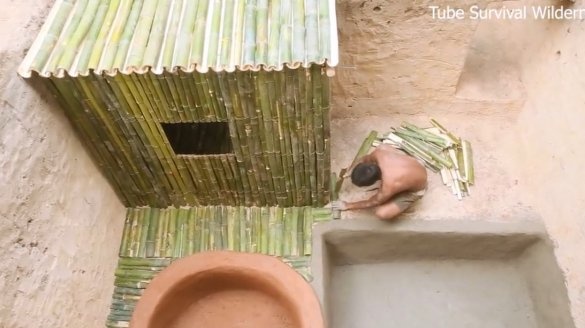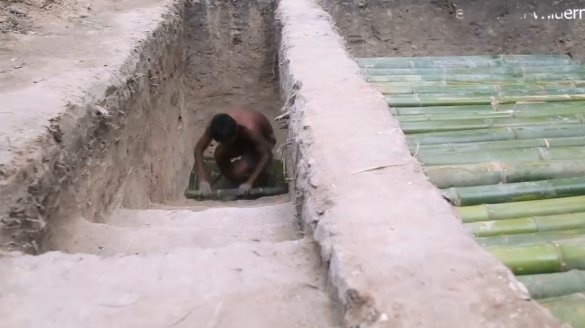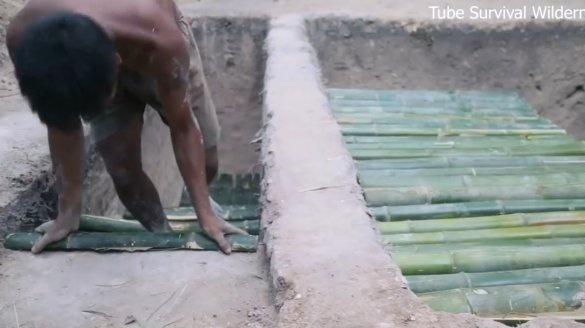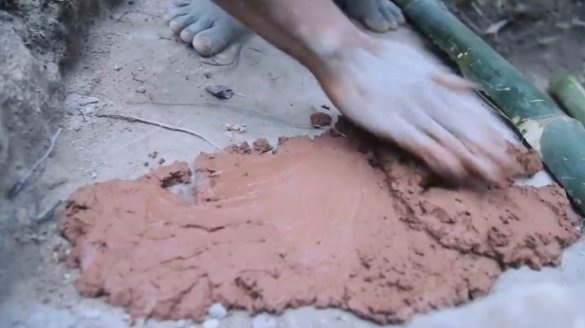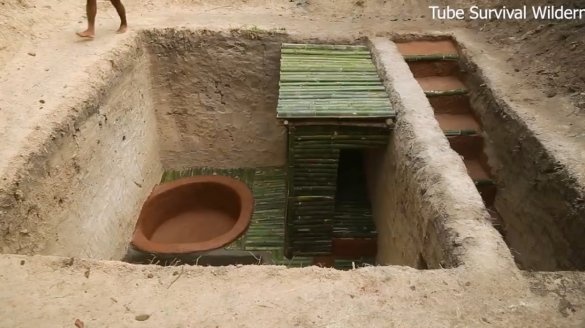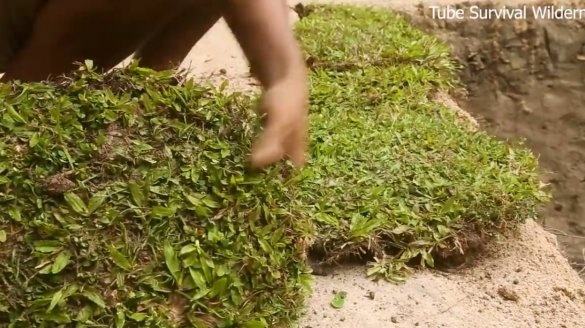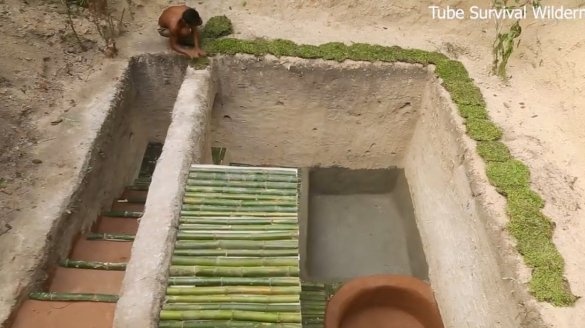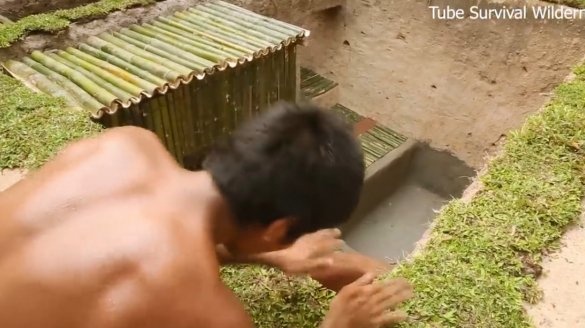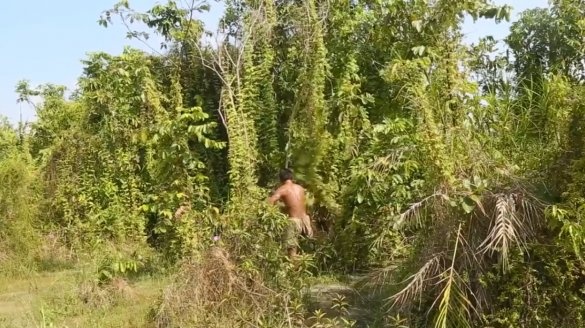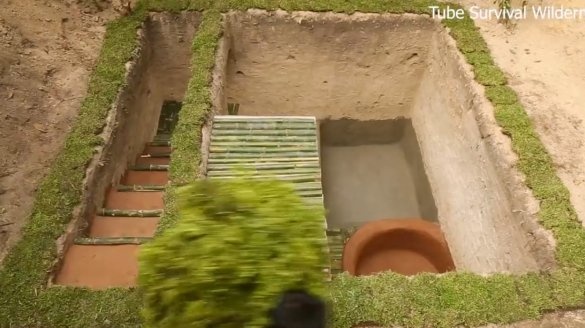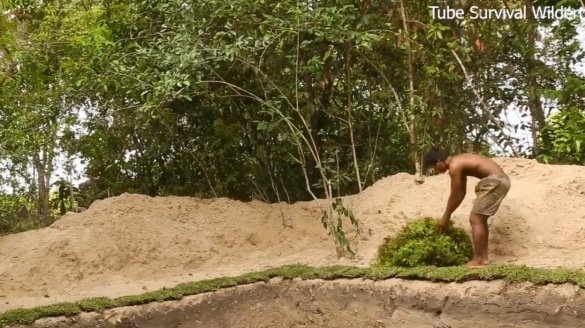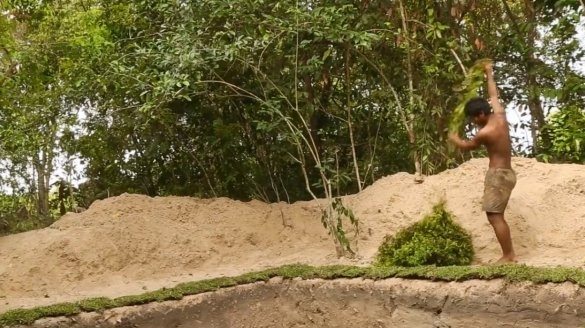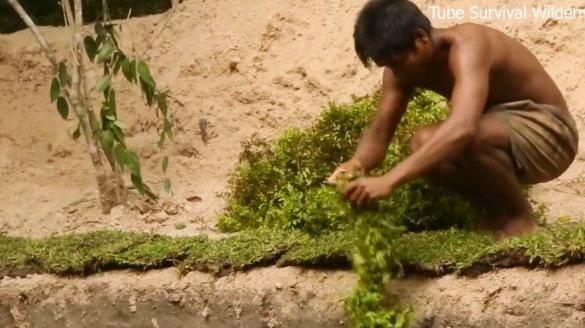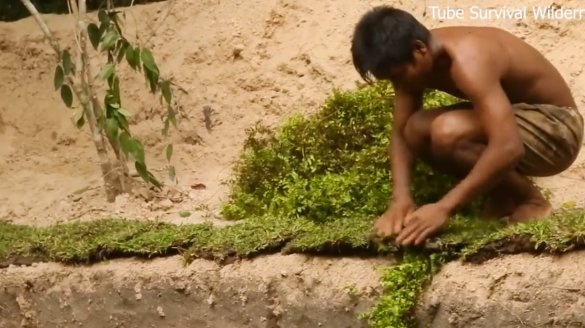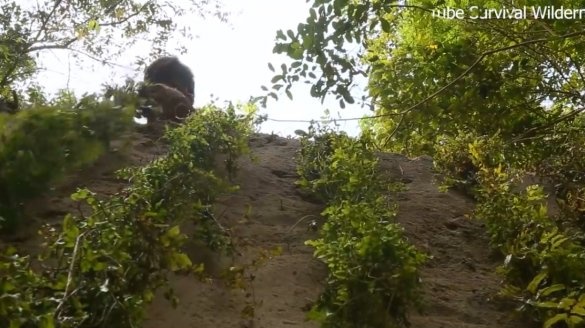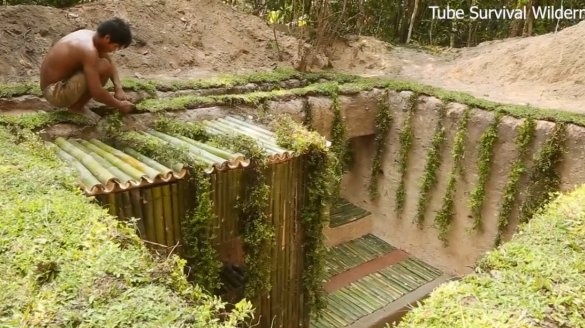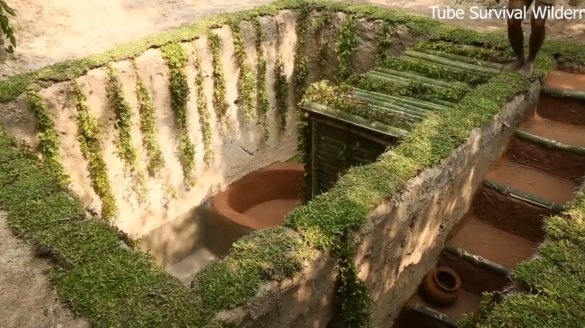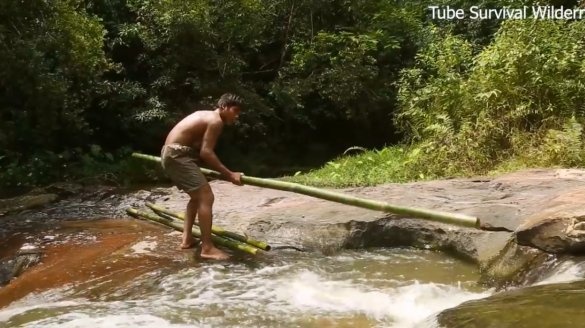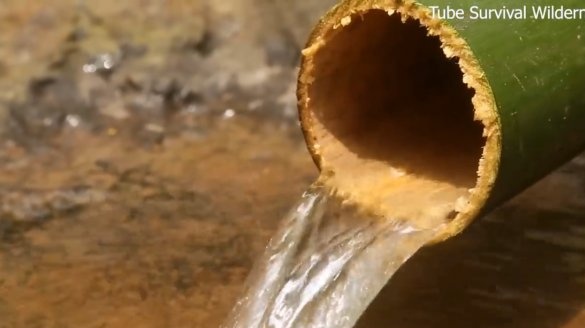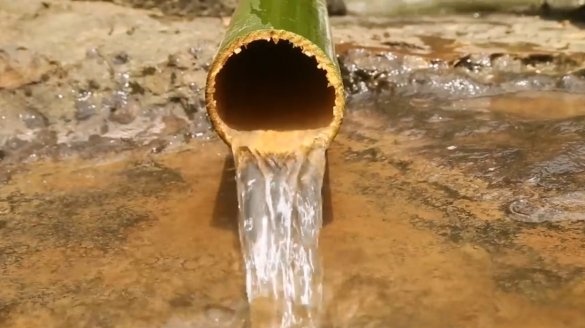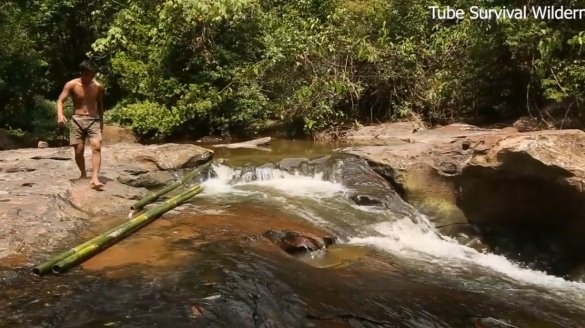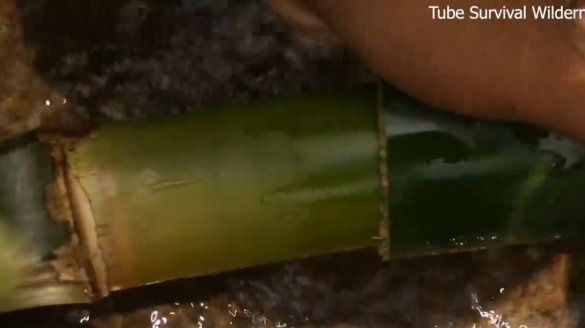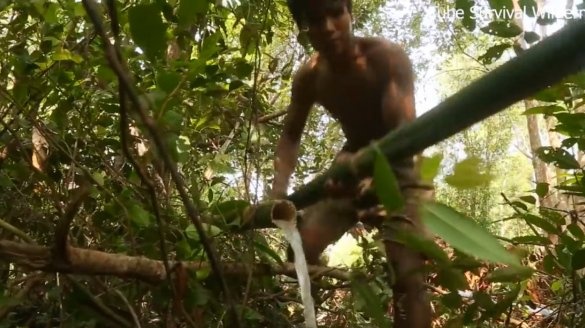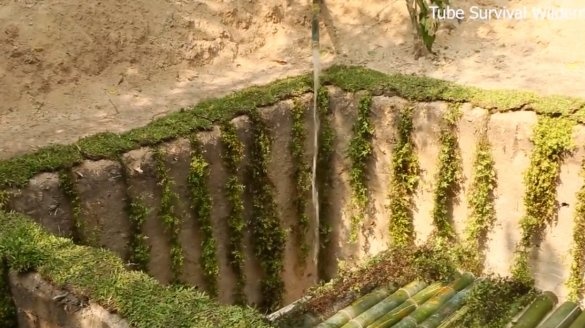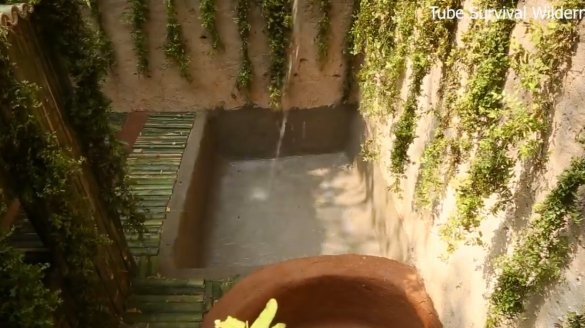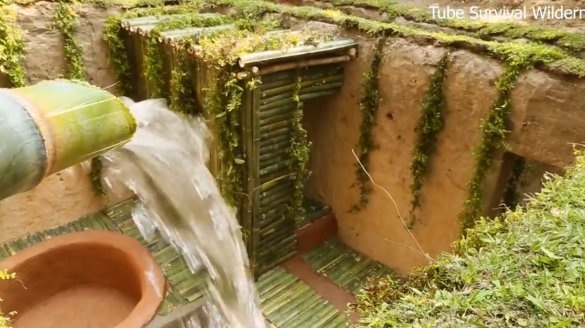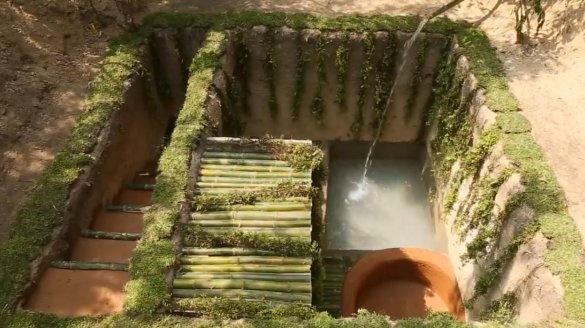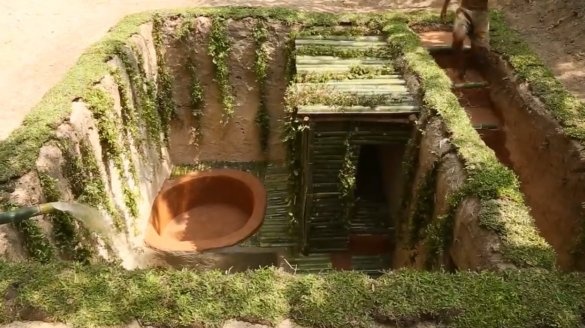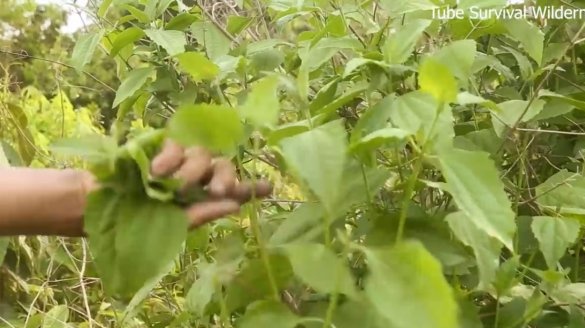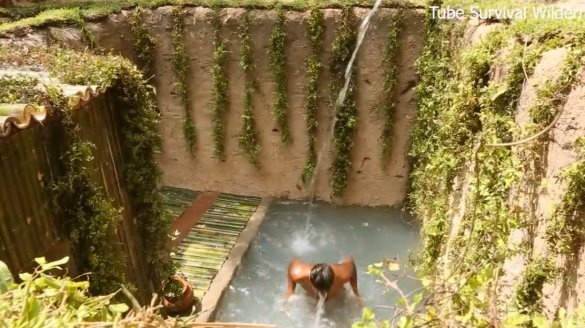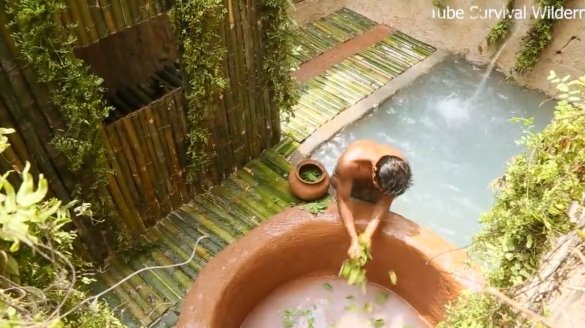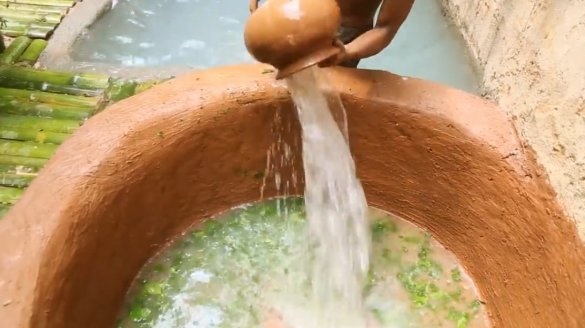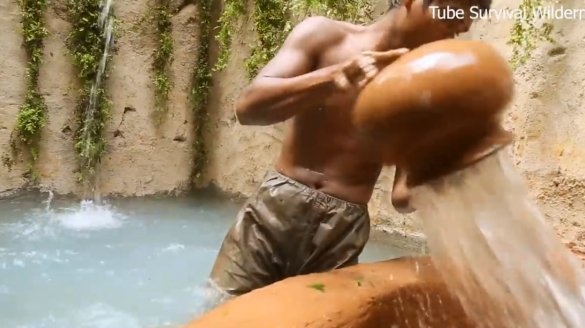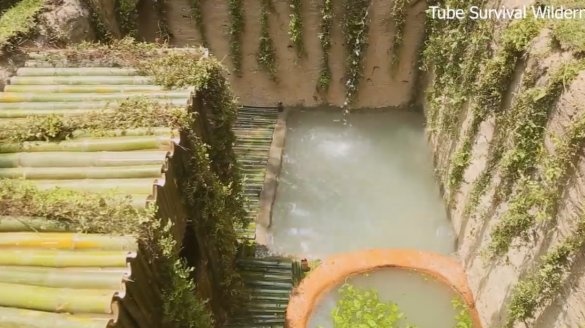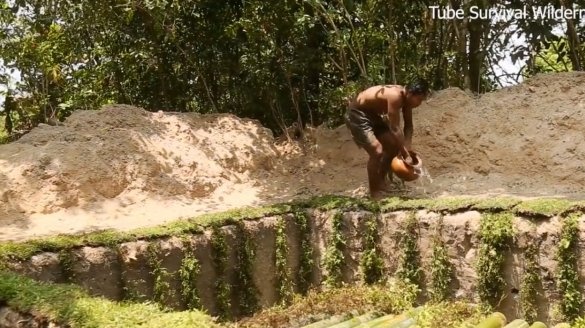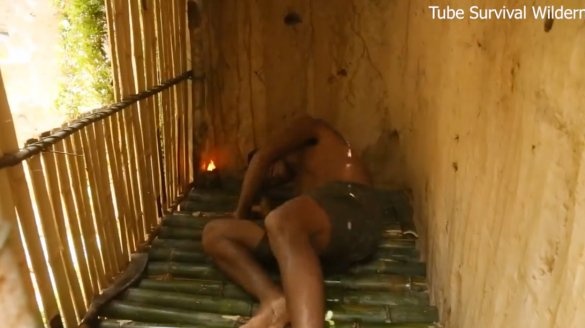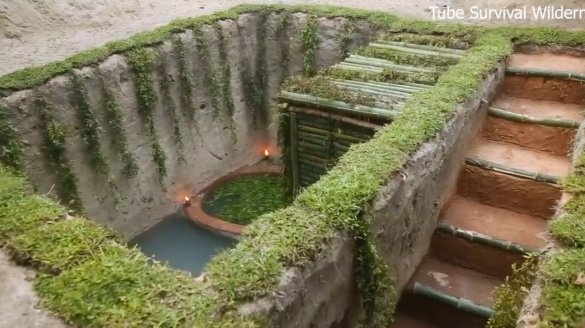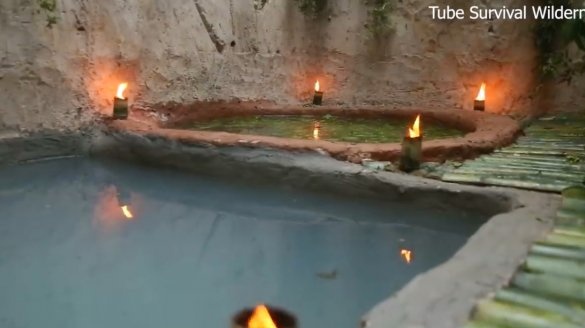In this article, the author of the YouTube channel "Tube Survival Wilderness" will tell you about a simple way to make a pool for lovers of exotic baths and water treatments. The author intends to show you the manufacturing technology of a dual healing natural pool.
Most interesting, for the manufacture of this homemade product, in addition to a shovel and a hand saw, no more tools are needed!
Materials
- Bamboo trunks
- Alumina, water.
Instruments, used by the author.
- Machete.
Manufacturing process.
On an arbitrarily chosen site, the craftsman sketches the outlines of the future complex of reservoirs.
Then he digs a deep pit. First, he simply loosens the entire area of the pit with a machete, and then he throws the soft earth away with his hands.
When the first tier of the earth is hollowed out and the ground is tilted, the author proceeds to the next tier. So the pit gradually deepens.
Next to the first, a craftsman digs a second pit of smaller sizes using the same technology. Only here each tier of the earth will form descending steps. Only from 5 to 7 steps.
At the very bottom, there remains a small platform, in the side wall of which the author punches a hole - the entrance to the main chamber of the pool.
Right at the entrance to the central body of water, as well as at its right wall, steps / elevations are created by deepening the rest of the bottom surface.
And at the far left corner a shallow well rummages, to which another reservoir adjoins.
At this point, the author prepares four long thin logs, a whole bunch of halves of a bamboo trunk and several long poles.
Near the steps at the far right corner, two support logs are vertically driven into the ground.
Two other trunks are placed transversely on vertically standing logs, one end of which breaks into the pool wall, and the other is attached to the end of vertically standing logs. As a rope, the author uses a tree bast and a string.On the resulting supports from above, the author puts two longitudinal trunks, and also fixes them with a towline.
Bamboo halves are transversely stacked on top of the resulting frame in the following order: two halves with a slice up, one half with a slice down. Moreover, the latter is laid so that it lies on the walls of the two lower ones. It turns out something like a clutch of tiles.
A transverse pole is attached to two distant racks, to which bamboo segments are tied vertically along its entire length.
Thus, it closes all the walls, fixing the bamboo on the transverse beams.
It turns out here is such a room with a window in the middle - a hut for relaxation.
Now you have to make the floor. The author also places bamboo halves on it. Only at the entrance to the room does the author leave a loophole so that you can get inside.
Further, the author uses clay soil and water to knead the solution.
With this solution, he covers the walls of the first well.
Further, on the river bank, a craftsman extracts river sludge, and covers it with another rectangular tank.
With halves of a bamboo trunk, he covers the rest of the pool floor.
The steps are also coated with red clay, and their welts are strengthened with bamboo planks.
Along the perimeter, the pool is covered with turf.
Under the turf are cascading strands of creepers. All these are decor elements.
With the help of several hollow bamboo trunks of different diameters, the author makes an improvised water supply, laying the first section of the “pipe” directly under the threshold of the stream.
The large pool slowly fills with water.
In the second tank - a small well - pieces of fragrant leaves are plucked, and filled with warm water.
At the edges of both tanks, the author puts the cylinders from a bamboo trunk and lights a fire in them. So that the dogwood does not dry out so quickly, and does not lose its attractiveness, it should be moistened with water. In two ponds you can perfectly wash yourself, and in a hut you can have a wonderful rest.
I thank the author for the unusual implementation of a primitive and natural SPA salon!
All good mood, good luck, and interesting ideas!
Author video can be found here.

